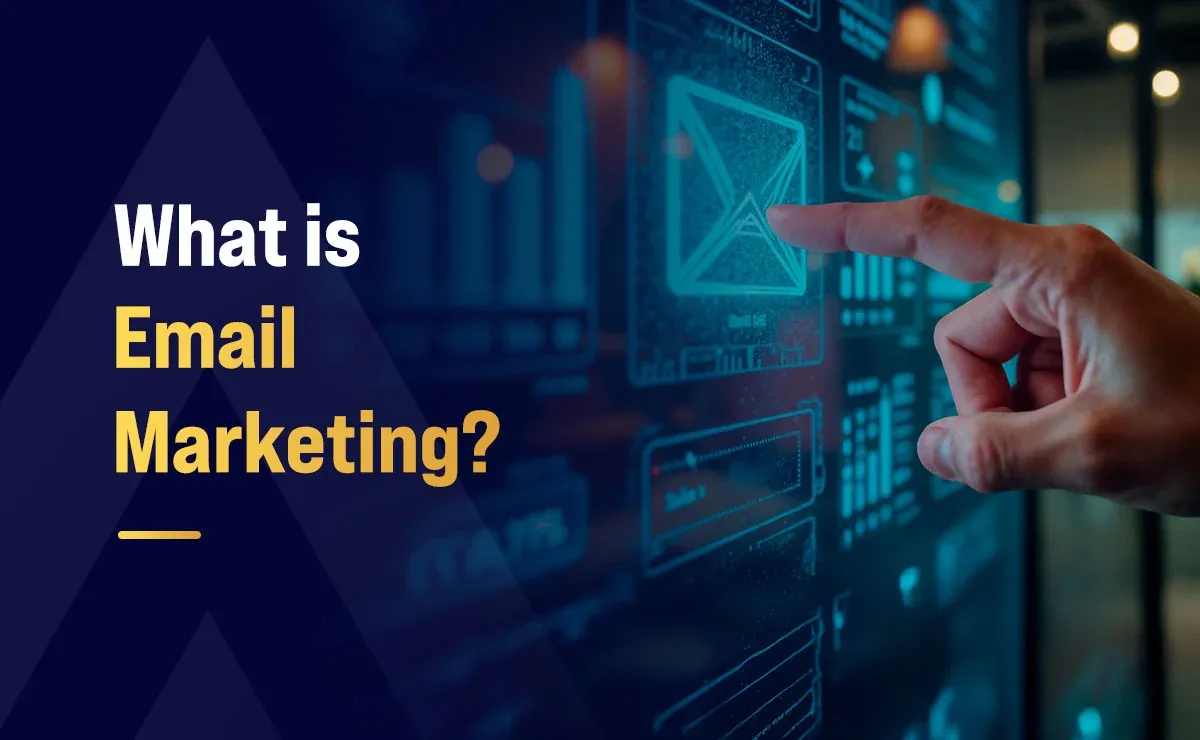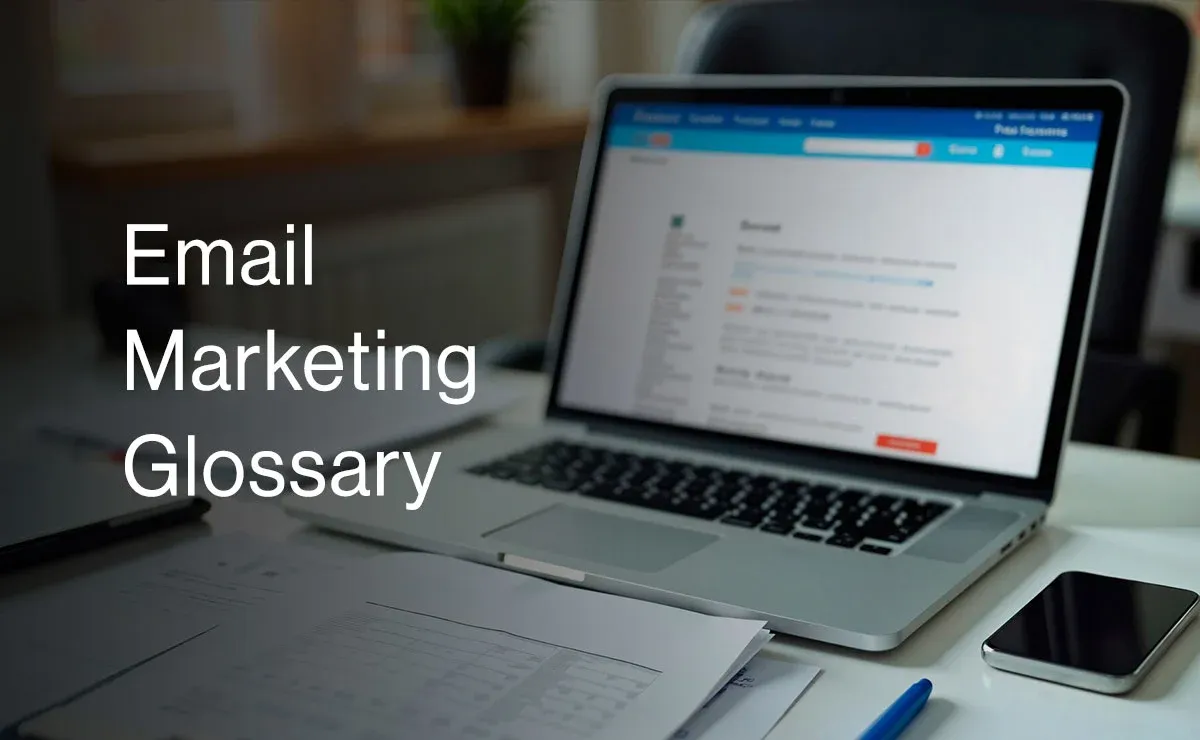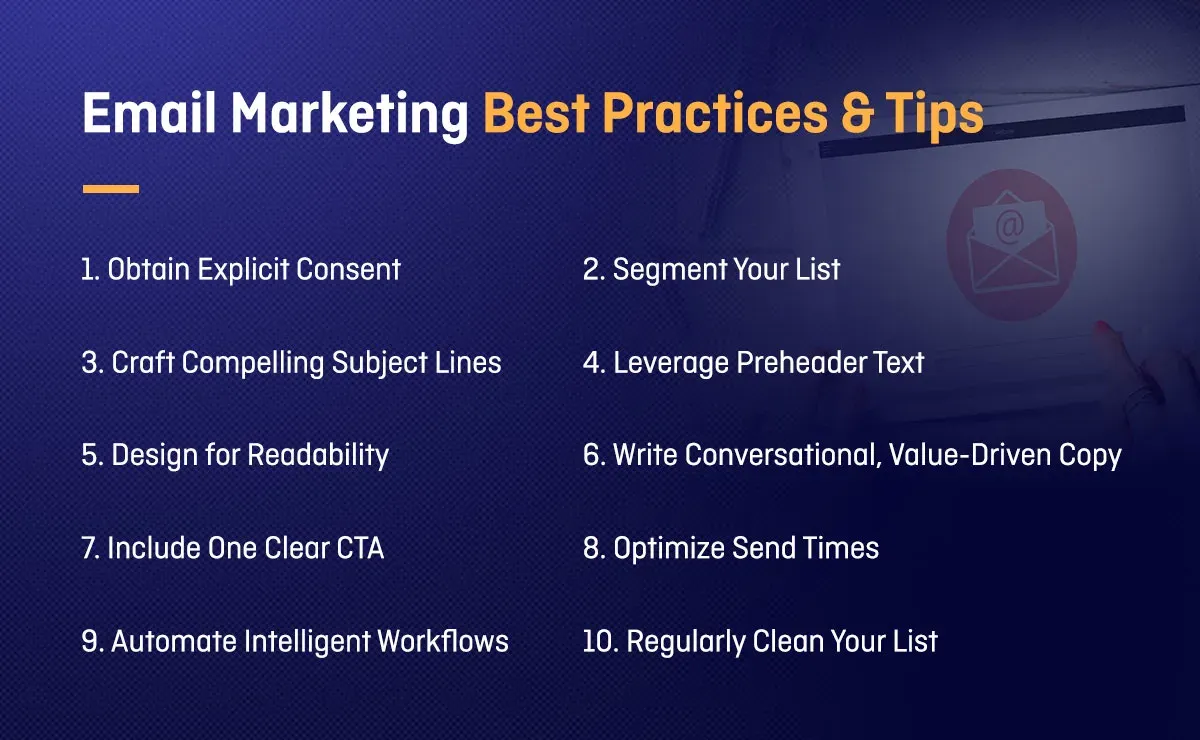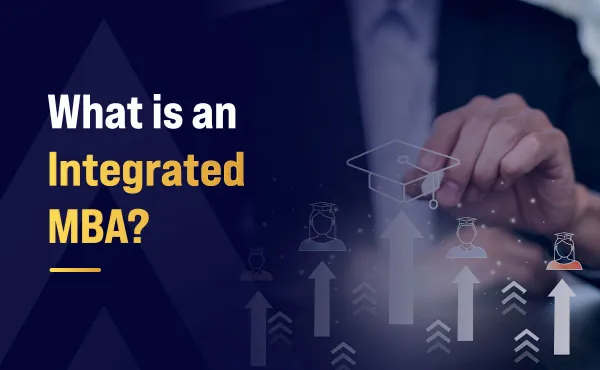What is Email Marketing?

Email marketing can be a powerful tool for personalized communication, transforming routine messages into strategic interactions. Imagine starting your semester with a tailored guide to campus events, study tips for your major, and a reminder for a bookmarked lecture, all alongside a friendly note from your student union.
This illustrates email marketing's ability to foster one-on-one dialogues that inform, motivate, and build lasting connections. This article will demystify email marketing, cover professional terminology, analyze its advantages and drawbacks, present various campaign examples, and provide actionable best practices and tools.
What is Email Marketing and its Impact?
Email marketing serves as a dynamic approach within direct and digital marketing, utilizing email communications to boost offerings, foster leads, and strengthen client connections. It helps deliver targeted promotional messages, transactional information, and relationship-building content to a list of subscribers who have opted to receive communications. As one of the earliest digital marketing channels, it remains a powerful, cost-effective way to reach students, professionals, and consumers alike.
Impact on Businesses
- Budget-Friendly Outreach: When stacked against conventional marketing avenues, email campaigns are far more economical, delivering exceptional ROI. On average, email marketing delivers about $36 back for every $1 spent, making it one of the most lucrative channels available.
- Direct Access to Audiences: Unlike social media or search ads, email allows brands to speak directly to a subscriber’s inbox without competing in an ever-changing algorithmic feed. Your email list is yours to keep, and no third party can restrict how or when you engage with your subscribers.
- Deep Personalization & Segmentation: Email lets you tailor your messages based on subscriber behavior, preferences, demographics, or engagement history. For example, an online bookstore can send thriller recommendations to one reader and academic journals to another. Such tailored interactions deepen engagement and enhance outcomes.
- Scalability and Accessibility: Many email service providers (ESPs) offer free tiers, enabling student organizations and small teams to send thousands of emails per month at no cost. This accessibility positions email marketing as a perfect learning platform for novice marketers.
- Metrics-Focused & Highly Adjustable: Every aspect of email campaigns is quantifiable, spanning open rates, click-through rates (CTR), and opt-out frequencies. And thanks to A/B testing, you can experiment with different subject lines, send times, or CTAs (calls-to-action) to fine-tune your strategy and consistently improve performance.
- Versatility Across the Funnel: Email is versatile and not just about marketing promotions, but it supports every stage of engagement, from welcome series and lead nurture campaigns to transactional receipts and event invites.
Overall, the impact of email marketing lies in its blend of affordability, measurability, and adaptability. Whether you’re launching a commercial campaign or a campus newsletter, understanding email marketing fundamentals equips you to communicate effectively and drive desired actions.
Email Marketing Glossary
To navigate the world of email marketing confidently, you need to understand its foundational terms. Whether you're a professional building your first newsletter or analyzing campaign results for a project, this glossary decodes the most common jargon.

Subscriber
A subscriber refers to someone who has willingly shared their email address to receive communications from a brand, entity, or individual. Subscribers form the core of your email list and are the primary audience for your campaigns
Opt-In / Opt-Out
- Opt-in refers to the action a user takes to give consent to receive email communications, typically through a signup form or checkbox.
- Opt-out allows recipients to withdraw their consent, typically via an unsubscribe link at the bottom of the email.
Open Rate
The ratio of delivered emails that recipients actually open, serving as a fundamental gauge of subject line appeal and sender credibility.
- Formula: (Opened Emails ÷ Delivered Emails) × 100
- Example: Sending 100 emails with 25 opens translates to a 25% open rate.
Click-Through Rate (CTR)
The proportion of readers who interacted with links embedded in the email. It measures how compelling your content and calls to action are.
- Formula: (Clicks ÷ Emails Delivered or Opened) × 100
- Example: If 100 people open your email and 10 click the “Register Now” button, your CTR is 10%.
Bounce Rate
The rate of emails that failed to reach their intended destinations.
- Hard Bounce: Indicates a permanent delivery failure (e.g., an invalid email address).
- Soft Bounce: It signals a deliverability hiccup that's typically short-lived (like a recipient's overloaded mailbox or temporary server disruption).
Unsubscribe Rate
The share of recipients who opted out of future emails. A rising trend here may signal content misalignment with audience needs.
A/B Testing (Split Testing)
A technique pitting two email variants (A vs. B) against each other to identify superior performance in opens, clicks, or conversions, testing one element at a time.
Segmentation
The strategy of splitting an email list into niche groups based on traits like geography, behavior, or demographics, enabling hyper-targeted messaging.
Personalization
Inserting specific subscriber data—like first name, past behavior, or preferences—into email content to make messages feel more targeted. Personalization often leads to higher engagement rates.
Email Automation
The use of technology to schedule and send emails automatically based on specific actions or time-based triggers. Typical instances include onboarding emails, cart recovery prompts, and celebratory greetings.
Email Campaign
A coordinated set of email messages sent to a specific group of people over a defined period with a particular marketing goal—such as promoting an event, launching a product, or nurturing leads.
Deliverability
Measures how reliably emails land directly in primary inboxes instead of being diverted to spam or promotional folders. Good deliverability depends on the sender's reputation, list hygiene, and content quality.
Spam/Junk Folder
A section in the recipient’s inbox where unsolicited or suspicious emails are filtered. Elements such as weak sender credibility, deceptive subject lines, or flagged terminology can trigger spam filters.
Transactional Email
An automated, non-promotional email triggered by user behavior. Examples include password reset emails, order confirmations, and payment receipts. These are usually expected and time sensitive.
Call to Action (CTA)
A strategic prompt designed to spur immediate engagement, using phrases like "Claim Yours," "Sign Up Today," or "Explore Further." High-performing CTAs are unambiguous, brief, and drive decisive action.
Advantages of Email Marketing
Cost-Effectiveness
- Low Cost per Message: Email campaigns cost a fraction of paid advertising, with many ESPs providing free tiers for basic use.
- High ROI: A well-executed email program often yields returns multiple times greater than the investment.
Direct, Personalized Communication
- Segmentation & Targeting: By grouping subscribers into segments (e.g., by study major, location, or past activity), you can send messages tailored to each group’s interests.
- Dynamic Content: Personalize subject lines and body content (e.g., greeting by first name) to increase engagement.
Measurability & Analytics
- Real-Time Tracking: Monitor opens, clicks, bounces, and unsubscribes as soon as a campaign is sent.
- Actionable Insights: Use A/B tests to refine subject lines, content, and send times based on hard data.
Automation & Scalability
- Automated Workflows: Set up triggers for welcome messages, cart abandonments, or event reminders, freeing up time for strategy and creativity.
- Scalable to Any List Size: From a classroom mailing list of 50 to a global body of 50,000, email scales gracefully.
Ownership of Audience
- List as an Asset: Your subscriber list belongs to you—unlike social media followers, which can be lost with algorithm changes or account restrictions.
Versatility
- Multiple Use Cases: From newsletters and promotional blasts to transactional notifications and re-engagement sequences, email covers every stage of the engagement funnel.
Disadvantages of Email Marketing
Inbox Competition & Overload
- High Volume of Emails: The average office worker receives 100+ emails daily, making it challenging to stand out.
- Short Attention Span: Studies show recipients spend as little as 10 seconds reading marketing emails.
Deliverability Challenges
- Spam Filters: Poorly authenticated senders or purchased lists risk landing in spam folders.
- IP Reputation: Suddenly sending thousands of emails from a new IP can trigger blocks without proper IP warming.
Regulatory Complexity
- Global Compliance: Navigating CAN-SPAM (USA), GDPR (EU), CASL (Canada), and the Digital Personal Data Protection Act (India) demands careful data management and documentation.
- Potential Penalties: Regulatory penalties may reach up to 4% of worldwide revenue under GDPR.
Design & Technical Constraints
- Rendering Issues: Emails must display correctly across dozens of email clients (Gmail, Outlook, Apple Mail, etc.) and device screen sizes.
- Resource Requirements: High-quality templates and testing tools may require specialized skills or budget.
List Fatigue & Churn
- Unsubscribes & Inactivity: Over-mailing or irrelevant content drives subscribers away, reducing list size and engagement.
Email marketing types and examples
Various email types cater to distinct stages of the customer lifecycle, whether nurturing prospects, boosting sales, or enriching post-purchase experiences.
Welcome Emails
Welcome emails mark the inaugural interaction with a new contact or buyer. Their primary function is to confirm the subscription, establish brand tone, and guide the recipient on what to expect in future communications. They often aim to build trust and engagement right from the start.
Example: A SaaS company sends a welcome email to new users after sign-up, introducing its core features, linking to tutorials, and offering tips for getting started efficiently.
Newsletters
Newsletters provide ongoing value through curated content, updates, announcements, or thought leadership. They are key to nurturing long-term relationships with subscribers by maintaining consistent engagement.
Example: A marketing agency sends a biweekly newsletter featuring industry news, blog posts, case studies, and upcoming webinar announcements to keep clients informed and engaged.
Promotional Emails
Promotional emails are used to generate sales or conversions by highlighting limited time offers, product launches, exclusive deals, or holiday discounts. Their objective is typically direct and short-term: drive immediate action.
Example: An eCommerce retailer sends out a flash sale email offering 30% off select items for 48 hours, complete with prominent CTAs like “Shop the Sale” and product image previews.
Transactional Emails
Transactional emails are auto-generated responses to user activities, delivering critical updates like order receipts, shipping alerts, or login details, prized for their relevance.
Example: A financial services platform sends a confirmation email after a customer updates their billing details, along with a summary of recent transactions for added security transparency.
Behavioral Trigger Emails
These emails are automatically triggered by a subscriber’s behavior, such as visiting a product page, abandoning a cart, or not completing a signup. Their goal is to re-engage users based on specific actions or inactivity.
Example: An online learning platform sends a follow-up email to users who started but didn’t complete a course registration, reminding them of the course benefits and offering a time-limited incentive to finalize enrollment.
Re-Engagement Emails
Reactivation campaigns target dormant users, revitalizing interest, and cleaning up contact lists. They often include incentives or personalized messages to reignite interaction.
Example: A digital publication sends a re-engagement campaign to users who haven’t opened any emails in 90 days, with a headline like “Still interested in industry insights?” and an option to update preferences or unsubscribe.
Event and Webinar Invites
These emails are used to promote upcoming events, both virtual and in-person, by providing details such as date, time, location, registration links, speaker highlights, and agenda. They aim to increase attendance and encourage RSVPs.
Example: A cybersecurity firm promotes an upcoming virtual summit with keynote speakers, panel sessions, and exclusive content, offering an early bird registration link for interested professionals.
Survey and Feedback Requests
Feedback emails seek to collect insights from your audience to improve products, services, or customer experience. These are valuable for market research, satisfaction analysis, and customer-driven innovation.
Example: A B2B software firm dispatches a post-onboarding NPS survey, soliciting feedback to refine user experience.
Email Marketing Best Practices and Tips

Obtain Explicit Consent
- Use clear, easy-to-find signup forms.
- Implement double opt-in to verify email validity and consent.
Segment Your List
- Group subscribers by demographics (year of study, major), behavior (courses viewed), or interests (clubs joined) to send relevant content.
Craft Compelling Subject Lines
- Keep it under 50 characters.
- Incorporate strong verbs, customization, and time-sensitive language.
- Experiment with A/B versions to maximize performance.
Leverage Preheader Text
- Complement the subject line with additional context.
- Keep under 100 characters for mobile-friendly display.
Design for Readability
- Use a single-column, mobile-responsive layout.
- Limit colors to your brand palette.
- Ensure CTAs are prominent and tappable on mobile devices.
Write Conversational, Value-Driven Copy
- Address the reader directly (e.g., “You’ll love these study tips”).
- Highlight benefits (“Boost your GPA with these resources”).
- Opt for concise blocks and bulleted content to enhance readability.
Include One Clear CTA
- Focus each email on a single goal, whether it’s driving clicks, downloads, or replies.
Optimize Send Times
- Test different days and times, like Tuesdays and Thursdays mid-morning, which often perform well, but adjust based on your audience’s habits.
Automate Intelligent Workflows
- Automate workflows for greetings, nudges, and follow-ups to sustain engagement effortlessly.
Regularly Clean Your List
- After 3–6 months of inactivity, send a re-engagement email.
- Remove hard bounces and unsubscribes to preserve deliverability.
Monitor and Analyze Metrics
- Track delivery, opens, clicks, conversions, bounces, and unsubscribes.
- Use insights to refine subject lines, content, segmentation, and timing.
Email Marketing Platforms and Tools
Platform | Best For |
Mailchimp | Beginners & small lists |
Brevo | Transactional + marketing emails |
Klaviyo | E-commerce & behavioral segmentation |
Moosend | Real-time analytics & triggers |
GetResponse | All-in-one marketing suite |
HubSpot | Integrated CRM + advanced analytics |
FAQs
Q1. How do I start email marketing?
Ans: Begin by selecting an email service (e.g., Mailchimp or ConvertKit), creating a permission-based list, and launching your maiden campaign. Segment audiences, clarify objectives, and refine tactics via analytics.
Q2. What is email marketing in digital marketing?
Ans: Email marketing is a digital tactic employing emails to advertise products, nurture bonds, and amplify customer interaction. It's permission-based, cost-effective, and often delivers the highest ROI among digital channels.
Q3. What advantages do templates offer in email campaign management?
Ans: Templates streamline creation while preserving brand uniformity. They make it easier to create professional, mobile-friendly emails quickly—without needing to design from scratch every time.
Summing Up
Email marketing endures as a cornerstone of digital outreach, unmatched in reliability. Its ability to deliver targeted, personalized content directly to a user’s inbox—combined with measurable results and strong ROI—makes it indispensable for businesses, nonprofits, and educational institutions alike.
By understanding the core principles, types of campaigns, and best practices outlined in this guide, marketers can design email strategies that foster engagement, drive action, and build long-term relationships. As inbox competition intensifies, mastering segmentation, automation, and value-driven messaging will be the key to staying relevant and effective.





